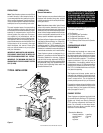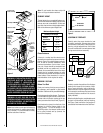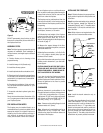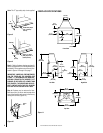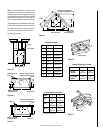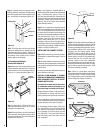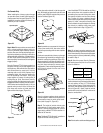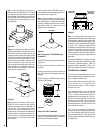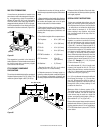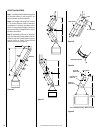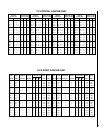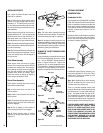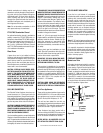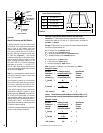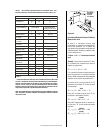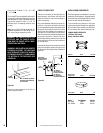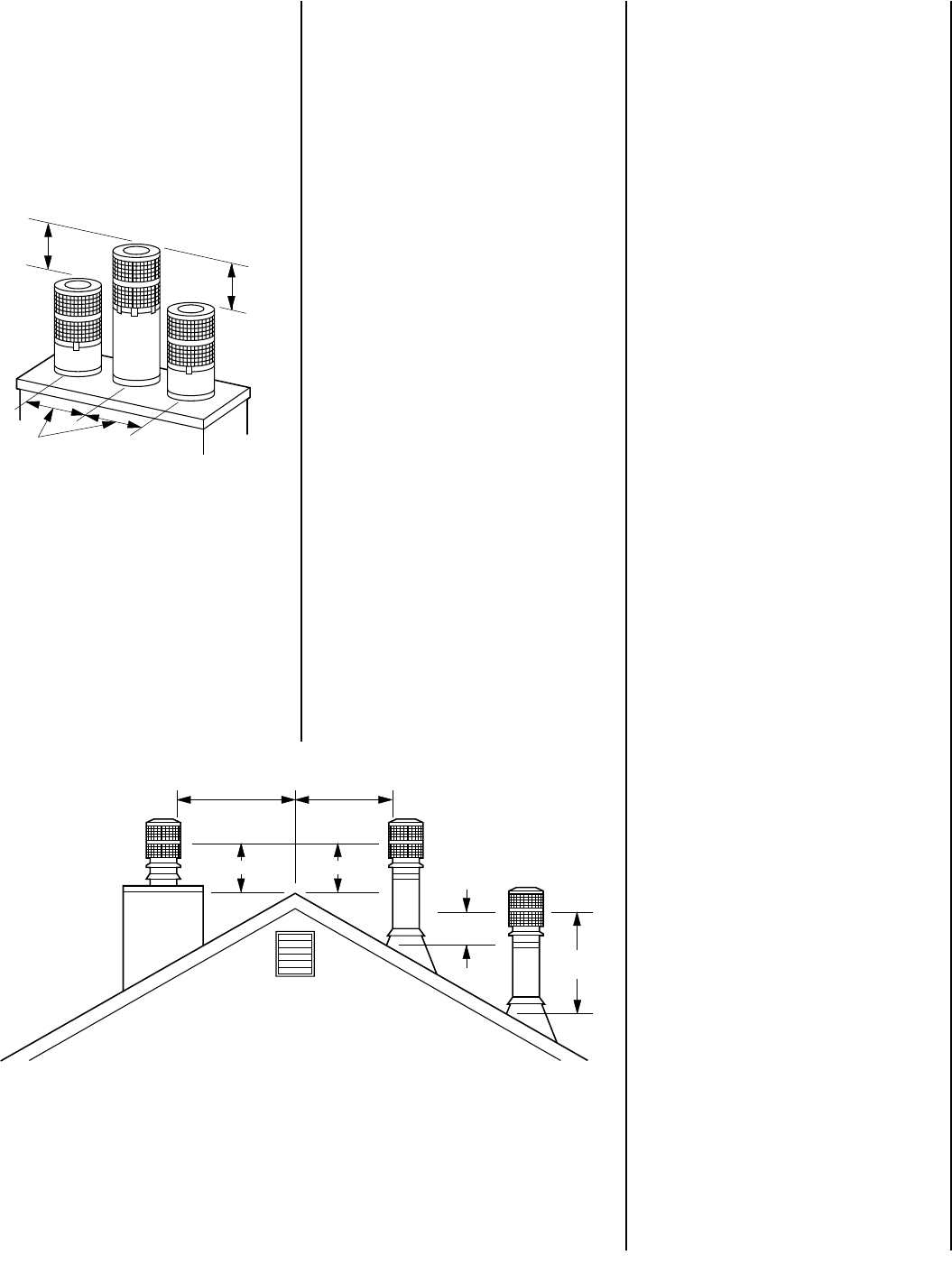
NOTE: DIAGRAMS & ILLUSTRATIONS NOT TO SCALE.
11
MULTIPLE TERMINATIONS
If more than one termination is located in the
same chase or within the same general proxim-
ity, we suggest they should be separated in
distance at least 24" (610 mm) horizontally
from flue center to flue center and stacked or
staggered vertically at least 18" (457 mm) apart,
from the termination of one smoke exit to the
termination of another smoke exit (
Figure 34
).
18"
(457mm)
18"
(457mm)
24"
(610mm)
Figure 34
This suggestion is provided in the interest of
better operation. If the terminations are located
too close to each other, smoke may migrate
from one flue into the other.
FTF10 CHIMNEY COMPONENT
CALCULATIONS
The minimum installed height of the completed
fireplace fireplace system is 16'0" (4.8 m). The
maximum system height is 80'0" (24.38 m).
Figure 35
3' Min.
(916mm)
Less Than 10' (3m)
2' Min. (610mm) 2' Min. (610mm)
2' Min.
(610mm)
To determine the number of chimney sections
and chimney components required, follow these
steps:
1. Determine total vertical height of the fireplace
installation. This dimension is the distance from
the surface the fireplace sets on to the point
where smoke exits from the termination.
2. Determine the number of chimney compo-
nents required, except chimney sections. This
would include firestop spacers, stabilizers, roof
flashing, etc.
3. The effective heights of the components are:
The Fireplaces = 65 ¹⁄₄" (1657 mm)
FTF10-12 = 10 ¹⁄₄" (260 mm)
FTF10-18 = 16 ¹⁄₄" (413 mm)
FTF10-36 = 34 ¹⁄₄" (870 mm)
CTDTM Termination = 10" (254 mm)
CT2 Termination = 15" to 23"
(381–584 mm)
S4 Stabilizer * = 3" (76 mm)*
* Required for every 30' (9.1 m) of vertical
chimney and/or 10' of offset chimney.
4. Determine amount of chimney height re-
quired by subtracting total combined height of
all pre-selected components (fireplace and
chimney components from total desired height.)
Reference Vertical Elevation Chart and deter-
mine the number of chimney sections (quantity
and length) required.
SPECIAL OFFSET INSTRUCTIONS
To clear any overhead obstructions, you may
offset your chimney system using Security's
30° offset and return elbows. Use two elbows
- an offset elbow to initiate the offset and a
return elbow to terminate it. A 30° offset
elbow, angling in any direction, may be the
first component used off the top of the fire-
place flue collar.
The offset and return elbows may be attached
together, or a section or sections of chimney
may be used between, but must not exceed
20' (6.1 m) in total length between elbows
(
Figure 36
). If sections of pipe exceed 10' (3
m) between elbows, a chimney stabilizer must
be used at the midpoint. The stabilizer sup-
port straps must be attached under tension
(in shear) to structural framing members
above. When two sets of elbows are used, the
maximum combined length of chimney used
between elbows cannot exceed 20' (6.1 m)
(
Figure 37
). Example: If C
1
= 10' (3 m) then
C
2
cannot exceed 10' (3 m).
If an offset exceeds 6' (1.8 m) in length, each
chimney joint beyond the first 6' (1.8 m) of
offset to the return elbow, must be secured by
a No. 8 x ¹⁄₂" sheet metal screw located at the
underside of the joint (
Figure 38
).
A ¹⁄₈" (13 mm) diameter hole must be drilled in
the chimney joint using a ¹⁄₈" (13 mm) diam-
eter drill. Hole should be drilled in center of
joint overlap (
Figure 39
). Be sure to drill only
through the outer chimney casting. Do not
puncture the inner flue.
Maximum offset of chimney system is 30°.
Two offsets must not be assembled to form a
60° offset. However, two sets of offset and
return elbows may be used on a single flue
system, provided the total height of the sys-
tem exceeds 22' (6.7 m) (
Figure 42
).
Return elbow support straps must be securely
attached under tension (in shear) to structural
framing members above. Do not substitute a
FTF10-30 offset elbow in place of a FTF10-E30
return elbow.



